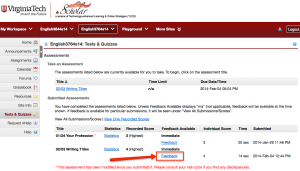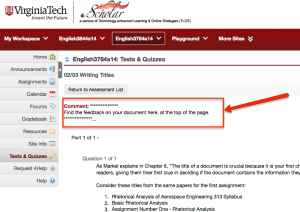Today is peer review day for the first project. You’ll pair up with another student in the classroom, share your Google Docs with each other, and add comments. At the end of the session, be sure to log into Scholar and post the required information to receive your points for today’s in-class writing.
- To begin, I’ll demonstrate how to share, comment, and reply in Google Docs. If you get lost or come in late, use the step-by-step instructions on How to Use Google Drive for Peer Review. (It’s under the Resources menu if you need to find it later.)
- You will have the rest of the class session to read your partner’s project, comment on it, and then read and respond to the comments that your partner left on your project.
- Please use these instructions to guide the feedback you leave:
- Imagine that you are your partner’s manager, and your job is to review the draft that your partner has given you and make suggestions to improve it. Add positive comments on anything your partner is doing effectively, and add suggestions on anything your partner could improve.
- Check the title of the document, and add a comment to tell your partner if it is clear and effective.
- Read the first paragraph, and add a comment on its effectiveness. Does it include the full details on the document your partner is analyzing? Does it provide everything the reader needs to know what the document is about? If anything is missing, make suggestions for improvement in your comment.
- Read through the rest of the document and add comments on at least three things your partner does well, and at least three things that your partner could improve on. It’s fine (excellent, even) to include more than the minimum number of comments.
- Check that your partner has addressed all six characteristics of technical communication and the eight measures of excellence (included in the project assignment, if you need to double-check them). If anything is missing, add a comment that lets your partner know.
- At the end of the document, add an overall comment that sums up what you thought of the paper and gives your partner some encouragement.
- Once you have finished adding comments to your partner’s project, return to your own paper, read the comments that your partner gave you, and add replies as appropriate. For instance, you might thank your partner for catching an error, ask your partner for more detail on feedback you don’t understand, or share a revision and ask your partner if it is an improvement.
- After you have read the comments on your project and replied, go to “Tests & Quizzes” in Scholar and complete today’s in-class writing, “02/07 Peer Review.” The post is short and easy, but you need to do it to get credit for your work today.
Homework
Read Chapter 9 of Markel, “Writing Correspondence.” Pay particular attention to the sections on writing letters, writing memos, and writing e-mails. I will ask you to write one of those three kinds of documents for your in class writing on Monday.

